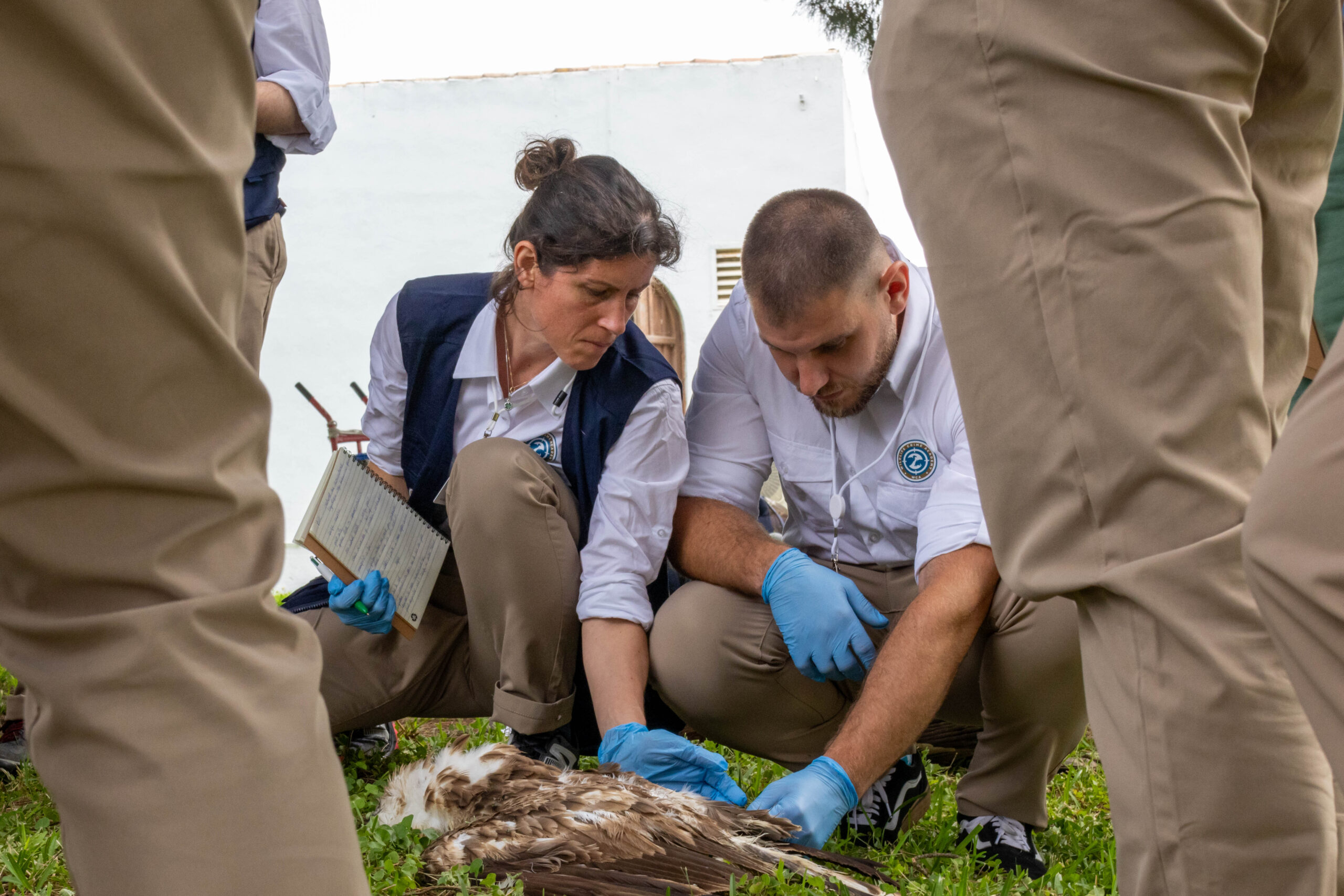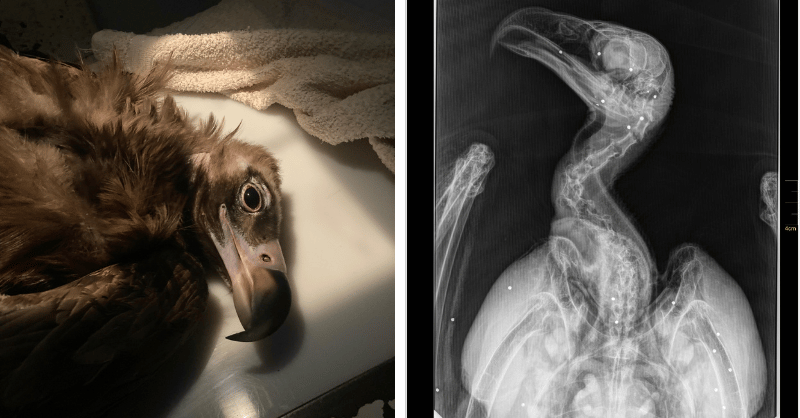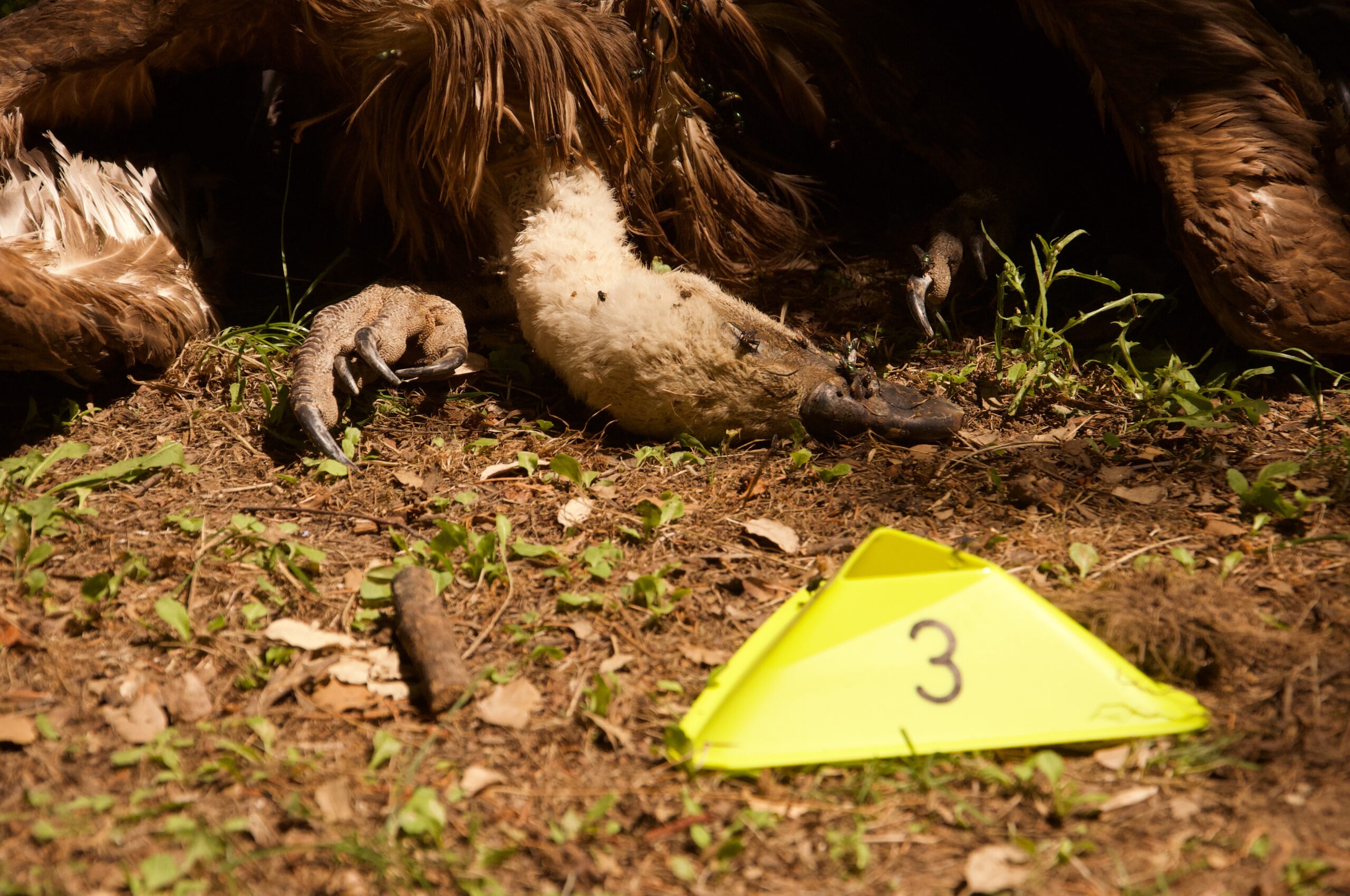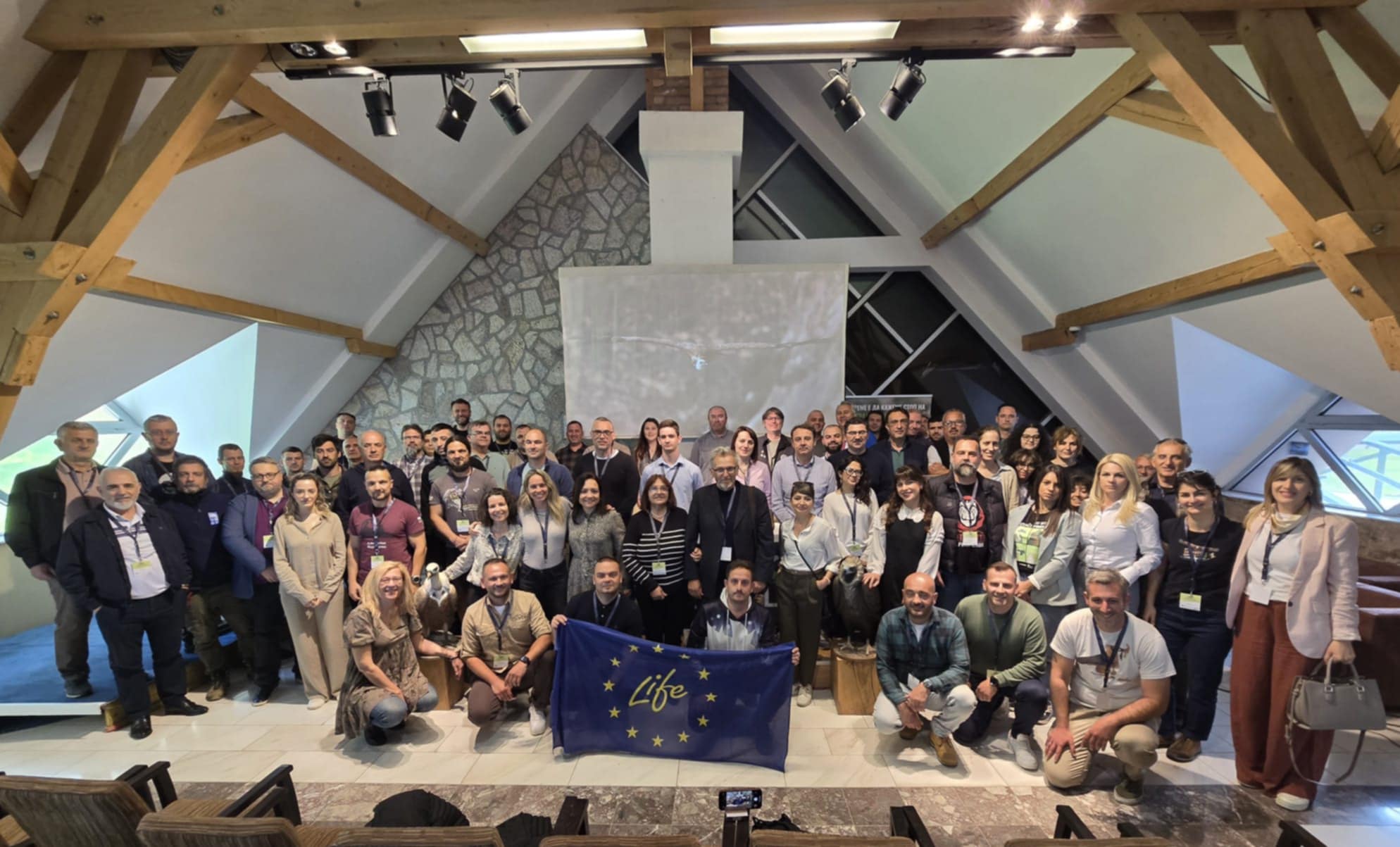A comprehensive study on Raptor Poisoning in Europe, which received a significant contribution and data from the Vulture Conservation Foundation (VCF), provides a continental-wide overview of the impacts of illegal poisoning in raptors, including vultures, in the last 20 years.
The study compiled and analysed raptor poisoning incidents across 22 European countries over two decades (1996-2016) – the vulture data therein provided by the VCF. The compilation documented 3,196 poisoning events, impacting 4,437 raptors spanning 37 species.
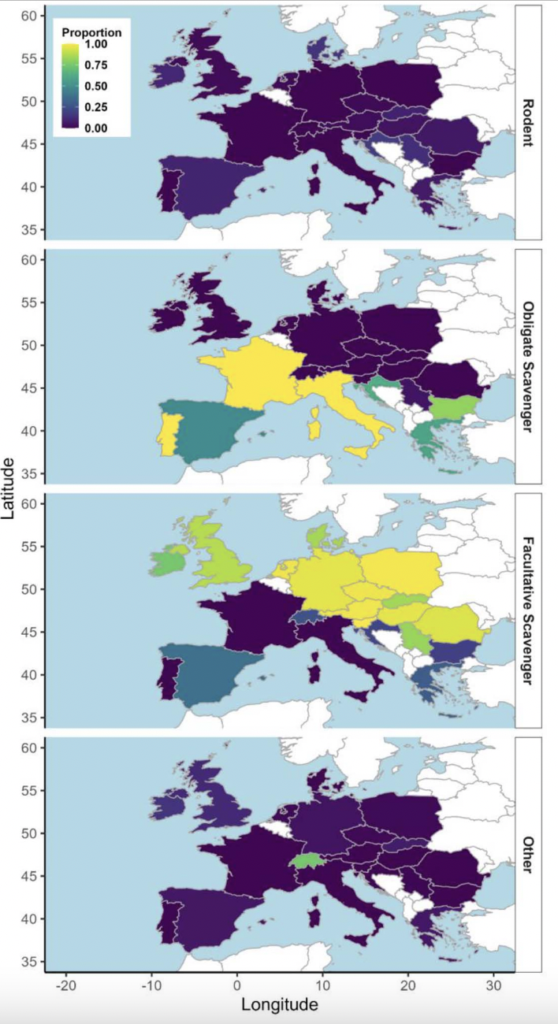
A pervasive threat to many endangered species
The main species affected were, as expected, obligate and facultative scavengers, with buzzards, eagles, vultures, and kites comprising 85% of the poisoned birds. The most frequently poisoned species included the Eurasian Buzzard (Buteo buteo, 46% of cases), Griffon Vulture (Gyps fulvus, 12%), White-tailed Eagle (Haliaeetus albicilla, 9%), Red Kite (Milvus milvus, 7%), and Western Marsh Harrier (Circus aeruginosus, 5%).
Alarmingly, six of the species impacted are globally threatened, and 15 are experiencing global population declines, as per the International Union for Conservation of Nature’s Red List.
Carbamates are the most detected toxins
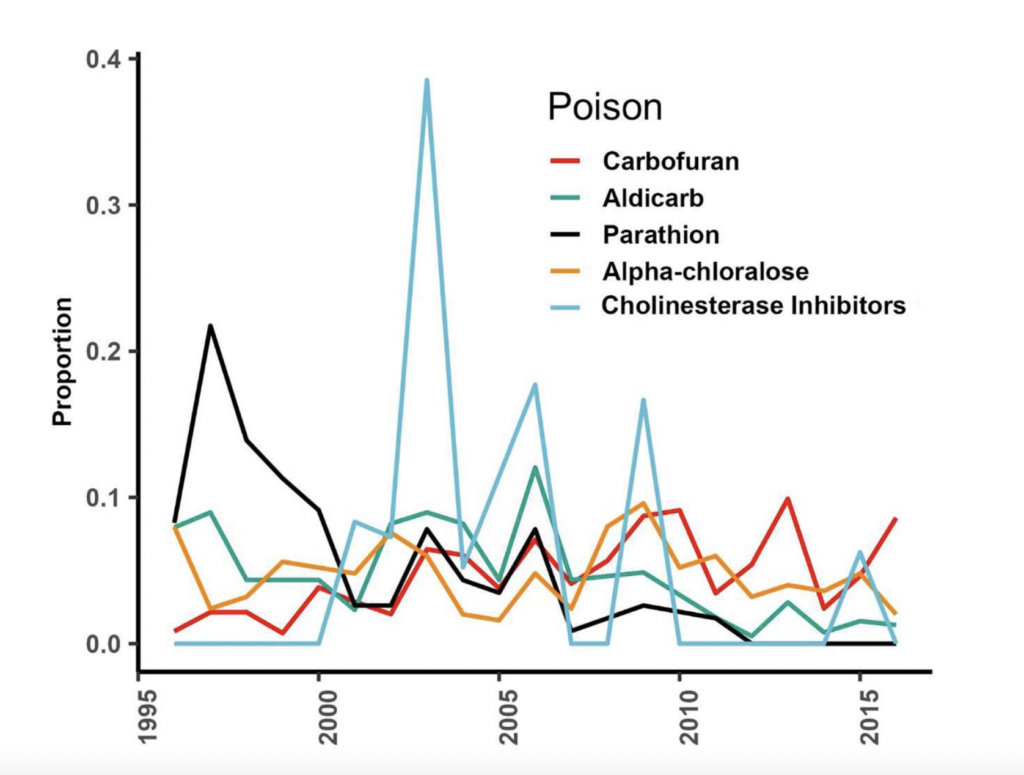
The study identified 41 pesticides used alone and 34 in combination in these poisoning incidents. Carbofuran and aldicarb were the most commonly detected toxins, found in 55% and 14% of single-substance poisonings, respectively, and in 57% and 18% of cases involving multiple substances.
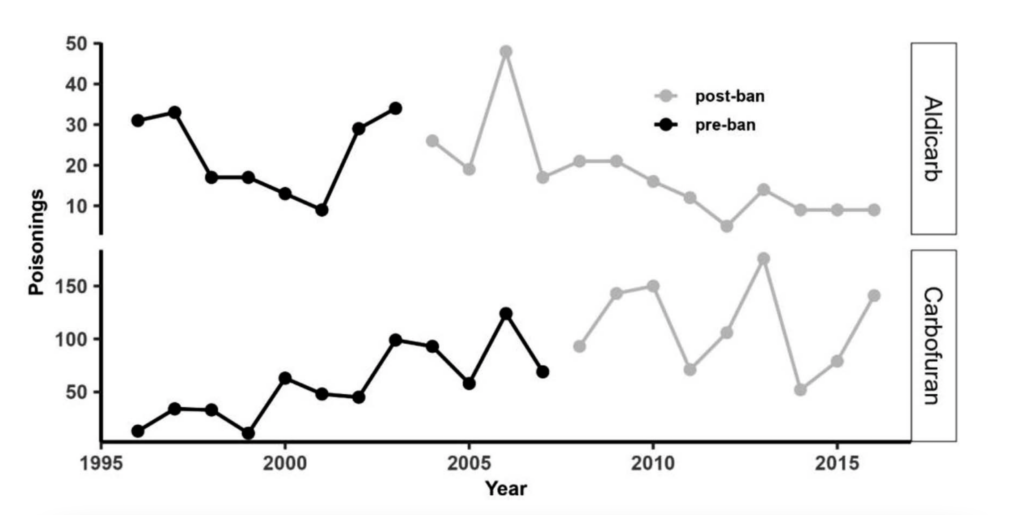
Notably, over half of the poisonings with carbofuran and aldicarb occurred after these substances were banned from trade. Carbofuran was the most frequently detected poison across various raptor dietary groups. Of the 1,589 raptors poisoned solely by carbofuran, 88% were facultative scavengers (including vultures and kites).

Seasonal analysis revealed a peak in poisoning incidents during March and April, coinciding with predator control activities undertaken in several countries, and accounted for 37% of the 3,566 cases with known dates. This trend was particularly evident among facultative scavengers (e.g., Eurasian Buzzard), while other raptor groups exhibited less pronounced seasonal patterns.
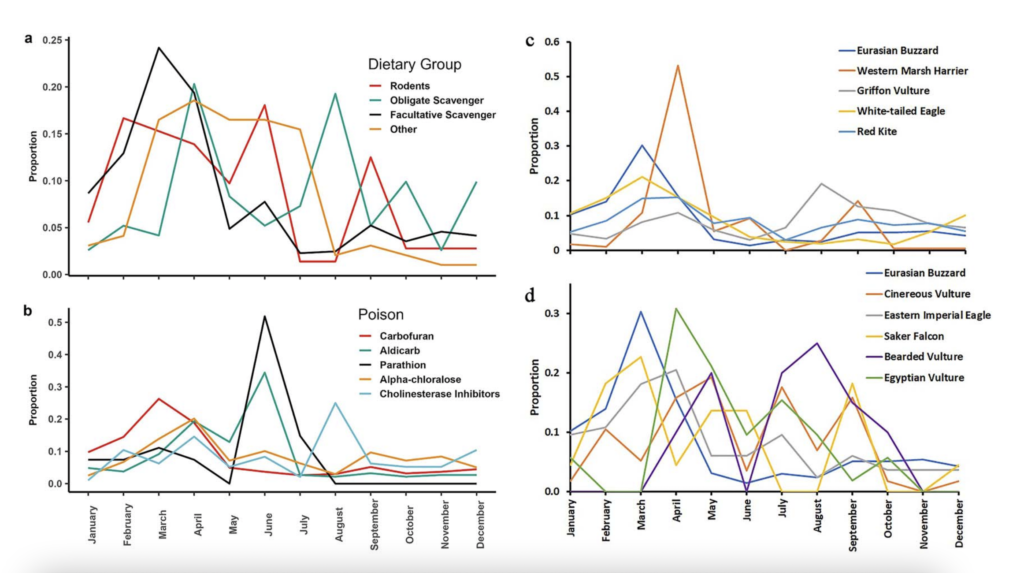
The study concludes that poisoning is still a significant threat to vultures and other raptors – indeed, it has been recognised by the Vulture Multi-Species Action Plan as the main threat to vultures worldwide.
This extensive use of pesticides, which is adversely affecting raptors in Europe, may have significant implications for the reduction of vital ecosystem services.
Making the fight against wildlife crime a European priority
The Raptor poisoning in Europe study demonstrates that pesticide poisoning is still widespread in Europe. This criminal practice not only affects already endangered species, but it consequently damages entire ecosystems. Even so, most poisoning incidents often go undetected. For this reason, it is crucial to alert the authorities every time someone suspects or detects such crimes.
The study advocates for more comprehensive monitoring of all raptor species affected by poisoning, especially those frequently reported such as Eurasian Buzzard, and for increased communication between scientists and rehabilitation groups.
VCF coordinates LIFE projects like BalkanDetoxLIFE and the WildLIFE Crime Academy making fighting wildlife poisoning their main objective. Most raptor-related projects across Europe are also dedicating efforts to tackle this threat, demonstrating how impactful it is on obligate and facultative scavengers’ populations and their ecosystems.
